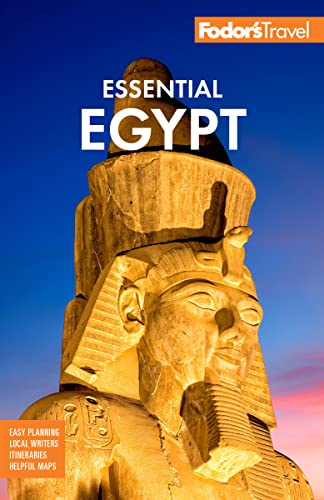For thousands of years Aswan was the "Southern Gate," the last outpost of the Egyptian empire. Its name comes from the ancient Egyptian swenet ("making business"), and its reputation as a frontier emporium dates from the colonial era of the ivory trade and commerce in ebony, gold, slaves, spices, gum arabic, ostrich feathers, and, at least until 1929, panther skins. Today’s souk may be tame by comparison but is no less interesting. Among the restaurants, juice stands, vegetable stalls—and yes, souvenir shops—people go about the business of Aswan knowing that this is a gateway to Africa, and that the Tropic of Cancer lies just a few miles to the south.
As seen in the climate-adapted architecture and gaily painted houses of the Nubian areas, Aswan town and its gracious inhabitants have an aesthetic sense rarely found in modern Egypt. This is a desert city, austerely clean, full of trees and gardens, the scents of baking sand and the Nile, oleander and frangipani.
It wasn't quite so shady when French troops arrived in 1799 on Napoléon's orders to capture or kill Mamluk leader Mourad Bey. By the time the exhausted regiment reached Aswan, the nimbler Mamluk cavalry had disappeared into the Nubian Desert. That gave the French time to take stock of the pharaonic and Greco-Roman monuments that even now seem strangely remote.
Although Aswan was a winter resort popular with Greeks, Romans, and Egyptians in antiquity, Europeans didn't come until Thomas Cook sent down his luxuriously outfitted and provisioned dahabiyyas (large feluccas) in 1869. Credited by some as having created the travel industry in Egypt, Cook provided the means for wealthy Victorians to comfortably explore one of the outreaches of their realm while enjoying Aswan's excellent, dry climate.
Rich in granite, this area was quarried by Egyptians and Romans, the evidence of which stands in monuments up and down the Nile Valley. It continues to yield mineral wealth to this day—in addition to the distinctive pink-and-black-flecked Aswan granite, there are iron foundries, aluminum mines, and important talc deposits that help fuel Egypt's development. South of Aswan, the High Dam testifies to Egypt's modern determination and its unparalleled ability to renew itself, even to the extent that Egypt no longer ends at Aswan. The use of Lake Nasser for tourism—and its open-air museum of salvaged monuments—extends the grand tour well into what is appropriately, and poignantly, called the New Nubia.
Aswan, like Luxor, is laid out along the Nile Corniche, but the West Bank here is undeveloped desert, accessible only by water. This means that you must make short river crossings by felucca—which are wonderful preludes to visiting Elephantine Island and Kitchener's Island, and the Tombs of the Nobles and Saint Simeon's Monastery on the West Bank.




